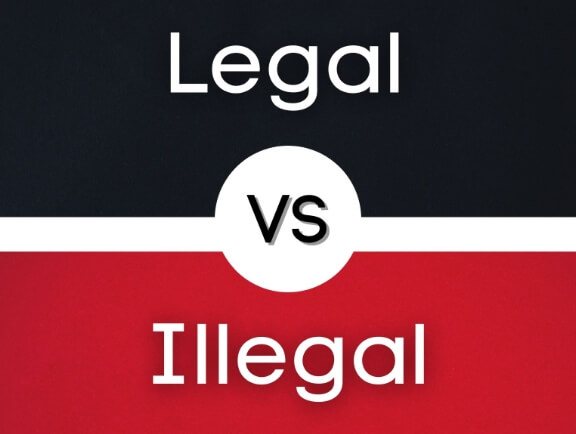
Understanding the Complex World of Amazon Data Extraction
When you‘re navigating the intricate landscape of digital information gathering, Amazon represents both a goldmine of potential insights and a formidable fortress of data protection. As a web scraping expert with years of experience in data extraction, I‘ve witnessed the evolving challenges of accessing Amazon‘s vast repositories of product information, pricing data, and market trends.
The question of whether web scraping Amazon is legal isn‘t a simple yes or no proposition. It‘s a nuanced journey through technological capabilities, legal frameworks, and ethical considerations that requires a sophisticated understanding of multiple interconnected domains.
The Legal Landscape: Navigating Uncertain Waters
Web scraping Amazon exists in a complex legal gray zone where multiple jurisdictional interpretations and technological constraints intersect. Unlike straightforward regulatory environments, Amazon‘s data ecosystem presents unique challenges that demand a strategic and informed approach.
International Legal Perspectives
Different countries approach web scraping with varying degrees of regulatory scrutiny. In the United States, courts have generally been more permissive, focusing on unauthorized access rather than blanket prohibitions. European Union regulations, particularly under GDPR, impose stricter data protection requirements that significantly impact web scraping practices.
For instance, a landmark case involving LinkedIn and hiQ Labs established important precedents regarding web scraping. The court ruled that scraping publicly available data might not constitute a violation of computer fraud statutes, providing a nuanced perspective that extends to platforms like Amazon.
Technical Barriers: Amazon‘s Advanced Defense Mechanisms
Amazon has developed sophisticated anti-scraping technologies designed to protect its data infrastructure. These mechanisms go far beyond simple IP blocking, incorporating advanced machine learning algorithms and behavioral analysis techniques.
Sophisticated Detection Technologies
Modern web scraping attempts face multiple layers of technological resistance:
Dynamic CAPTCHA Challenges: Amazon employs advanced image and behavioral verification systems that dynamically adjust to detect automated scraping attempts.
Intelligent Rate Limiting: The platform monitors request frequencies, implementing intelligent throttling mechanisms that can identify and block potential scraping activities within milliseconds.
Browser Fingerprinting: By analyzing unique device characteristics, Amazon can distinguish between genuine human browsing and automated data extraction attempts.
Ethical Considerations and Best Practices
Successful web scraping requires more than technical prowess—it demands a comprehensive ethical framework that respects platform integrity and user privacy.
Responsible Data Extraction Strategies
When approaching Amazon data extraction, consider these critical ethical guidelines:
- Minimize server load and request frequency
- Respect robots.txt directives
- Avoid accessing private or personally identifiable information
- Use data for legitimate research or analysis purposes
- Implement transparent data handling practices
Alternative Data Access Methods
Given the complexities of direct web scraping, several alternative approaches offer more reliable and legally defensible data collection strategies:
Official Amazon APIs
Amazon provides official APIs that offer structured, authorized data access:
- Product Advertising API: Enables developers to access product information through a sanctioned channel
- Amazon Affiliate Program: Offers comprehensive product data with clear usage guidelines
- Marketplace Web Service: Provides authorized data extraction for sellers and researchers
Practical Implementation Techniques
For professionals seeking to extract Amazon data, consider these advanced strategies:
Proxy and IP Rotation Techniques
Implementing sophisticated IP rotation strategies can help mitigate blocking risks:
- Use residential proxy networks
- Implement intelligent request spacing
- Utilize geographically diverse IP addresses
- Simulate human browsing patterns
Machine Learning-Powered Extraction
Advanced scraping tools now incorporate machine learning algorithms that can:
- Adapt to changing website structures
- Predict and circumvent detection mechanisms
- Optimize data extraction efficiency
Investment and Market Analysis Perspectives
Web scraping Amazon isn‘t just a technical challenge—it‘s a strategic opportunity for market intelligence and competitive analysis.
Data Monetization Potential
Professionally extracted Amazon data can provide valuable insights for:
- Pricing strategy development
- Competitive market research
- Consumer behavior analysis
- Product trend identification
Future Trends in Web Scraping Technologies
The landscape of web scraping continues to evolve rapidly, with emerging trends including:
- Enhanced machine learning detection techniques
- More sophisticated data access frameworks
- Increased regulatory compliance requirements
- Advanced anonymization technologies
Conclusion: Navigating the Amazon Data Ecosystem
Web scraping Amazon represents a complex, multifaceted challenge that requires a holistic approach. Success demands technical expertise, legal awareness, and a commitment to ethical data practices.
By understanding the intricate legal, technological, and ethical considerations, professionals can develop robust strategies for accessing valuable market insights while maintaining platform integrity and regulatory compliance.
Remember, web scraping isn‘t about circumventing restrictions—it‘s about developing intelligent, respectful approaches to data collection that provide genuine value to researchers and businesses alike.










